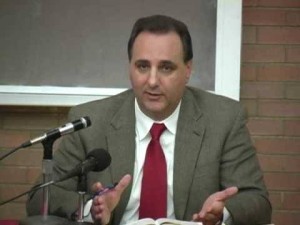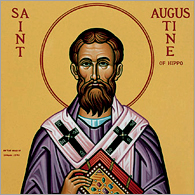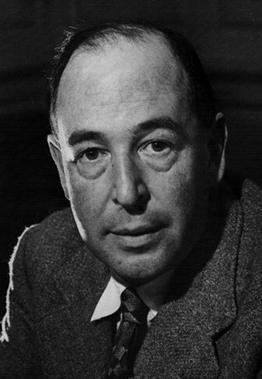 It’s over. It has been over for a very long time. But, like a gathering of die hards who think Appomattox was just a temporary set-back for the South, this crop of geocentrists operate in a kind of time warp.
It’s over. It has been over for a very long time. But, like a gathering of die hards who think Appomattox was just a temporary set-back for the South, this crop of geocentrists operate in a kind of time warp.
In 1820, the Catholic Church officially closed the debate: Catholics are perfectly free to accept and teach modern cosmological views concerning the motion of the earth while rejecting geocentrism. In 1822, the Church went even further and declared penalties for not allowing the publication of books that present the motion of the earth as a logical conclusion of science.
His Holiness has decreed that no obstacles exist for those who sustain Copernicus’ affirmation regarding the earth’s movement in the manner in which it is affirmed today, even by Catholic authors. (1820)
*****************
There must be no denial, by the present or by future Masters of the Sacred Apostolic Palace, of permission to print and to publish works which treat of the mobility of the earth and of the immobility of the sun, according to the common opinion of modern astronomers…those who would show themselves to be reluctant or would disobey, should be forced under punishments at the choice of [this] Sacred Congregation, with derogation of [their] claimed privileges, where necessary. (1822)
As I argued in detail in Geocentrism and Strict Canonical Interpretation, the 1616 decree of the Congregation of the Index and the 1633 decree of the Holy Office against Galileo addressed a strict heliocentrism, which posited a motionless sun at the center of the universe and a mobile earth. Such a strict heliocentrism was deemed to be “absurd and false in [natural] philosophy” (i.e. in science) and also “contrary to Scripture”.
What became apparent not so many decades after the time of Galileo, is that additional astronomical evidence answered questions and filled in gaps in evidence such that more modern astronomical views could no longer be said to be “absurd and false”. Even the new geocentrists have to admit this—for example, even though they hold that the earth is not moving, they do not consider the motion of the earth to be “absurd and false in philosophy”. It is also universally true now that modern cosmological views do not posit a motionless sun at the very center of the universe, but hold instead to the motion of both earth and sun.
Since the Catholic Church has held from time immemorial that canonical penalties (which the 1616 and 1633 decrees clearly are) must be interpreted strictly, that is, as narrowly and as affecting as few people as possible, the case was there to be made that more modern views do not fall under the 1633 decree at all. Ultimately, given the authority structure in the Catholic Church, this is a question that could only be answered definitively by the Magisterium, the official teaching office of the Church. And so it was.
 In the early 1800s a Catholic astronomer, Canon Giuseppe Settele wrote a book presenting a non-geocentric view—and specifically the motion of the earth on its axis and around the sun—as a clear and logical conclusion from the scientific evidence. Fr. Filippo Anfossi, the Master of the Sacred Palace and hence chief censor for Rome at the time, denied this book an imprimatur on the ground that such a view violates the 1633 decree against Galileo. When Canon Settele appealed directly to Pope Pius VII, the question was examined by the Holy Office (the same church body that issued the decree against Galileo), and as result the question of whether it is permitted for Catholics to believe in the mobility of the earth was answered officially in two decrees. Here is the first:
In the early 1800s a Catholic astronomer, Canon Giuseppe Settele wrote a book presenting a non-geocentric view—and specifically the motion of the earth on its axis and around the sun—as a clear and logical conclusion from the scientific evidence. Fr. Filippo Anfossi, the Master of the Sacred Palace and hence chief censor for Rome at the time, denied this book an imprimatur on the ground that such a view violates the 1633 decree against Galileo. When Canon Settele appealed directly to Pope Pius VII, the question was examined by the Holy Office (the same church body that issued the decree against Galileo), and as result the question of whether it is permitted for Catholics to believe in the mobility of the earth was answered officially in two decrees. Here is the first:
Decree
[Rome], 1820 VIII 16
Vol. I, fol. 174v (Bruni, scribe)
The Assessor of the Holy Office has referred the request of Giuseppe Settele, Professor of Optics and Astronomy at La Sapienza University, regarding permission to publish his work Elements of Astronomy in which he espouses the common opinion of the astronomers of our time regarding the earth’s daily and yearly motions, to His Holiness through Divine Providence, Pope Pius VII. Previously, His Holiness had referred this request to the Supreme Sacred Congregation and concurrently to the consideration of the Most Eminent and Most Reverend General Cardinal Inquisitor. His Holiness has decreed that no obstacles exist for those who sustain Copernicus’ affirmation regarding the earth’s movement in the manner in which it is affirmed today, even by Catholic authors. He has, moreover, suggested the insertion of several notations into this work, aimed at demonstrating that the above mentioned affirmation [of Copernicus], as it has come to be understood, does not present any difficulties; difficulties that existed in times past, prior to the subsequent astronomical observations that have now occurred. [Pope Pius VII] has also recommended that the implementation [of these decisions] be given to the Cardinal Secretary of the Supreme Sacred Congregation and Master of the Sacred Apostolic Palace. He is now appointed the task of bringing to an end any concerns and criticisms regarding the printing of this book, and, at the same time, ensuring that in the future, regarding the publication of such works, permission is sought from the Cardinal Vicar whose signature will not be given without the authorization of the Superior of his Order. [1]
 It’s hard to overstate the importance of this decree. Unlike the 1633 decree against Galileo, this decree explicitly invokes the pope’s authority and does not address a single individual but makes a broader decision on the matter. And it rules that there are “no obstacles” and “no difficulties” for Catholics to hold to modern cosmological views, which include both the rotational and translational motion of the earth. It is little wonder, then, that in a 1992 address to the Pontifical Academy of Science, Pope John Paul II stated, “the debate which had not ceased to evolve thereafter, was closed in 1820 with the imprimatur given to the work of Canon Settele” [2].
It’s hard to overstate the importance of this decree. Unlike the 1633 decree against Galileo, this decree explicitly invokes the pope’s authority and does not address a single individual but makes a broader decision on the matter. And it rules that there are “no obstacles” and “no difficulties” for Catholics to hold to modern cosmological views, which include both the rotational and translational motion of the earth. It is little wonder, then, that in a 1992 address to the Pontifical Academy of Science, Pope John Paul II stated, “the debate which had not ceased to evolve thereafter, was closed in 1820 with the imprimatur given to the work of Canon Settele” [2].
In 1822 the Holy Office issued a follow-up decree, which actually applies penalties for not allowing the publication of books that present the motion of the earth as a logical conclusion of science:
The most excellent [cardinals] have decreed that there must be no denial, by the present or by future Masters of the Sacred Apostolic Palace, of permission to print and to publish works which treat of the mobility of the earth and of the immobility of the sun, according to the common opinion of modern astronomers, as long as there are no other contrary indications, on the basis of the decrees of the Sacred Congregation of the Index of 1757 and of this Supreme [Holy Office] of 1820; and that those who would show themselves to be reluctant or would disobey, should be forced under punishments at the choice of [this] Sacred Congregation, with derogation of [their] claimed privileges, where necessary.[3]
This decree, too, was approved by Pope Pius VII.
The grounds on which these decrees may be harmonized with the decree against Galileo have been laid out in detail in Geocentrism and Strict Canonical Interpretation. Suffice it to say for now that the official teaching of the Catholic Church is that Catholics are perfectly free to hold to modern cosmological views that include the motion of the earth on its axis and around the sun.
But the new geocentrists take a very different view of things. Regarding the question of whether modern astronomical views still stand condemned and prohibited, the leader of the new geocentrists, Robert Sungenis, states:
 As far as the Church was concerned, there were two choices – either the Earth moved or it did not. It made no difference to Paul V, Urban VIII, or even Benedict XIV who kept Copernicus, et al., on the Index in 1758, whether it was Galileo’s model, Kepler’s model, Newton’s model or anyone else’s. All of them were rejected and/or condemned because they made the Earth move, contrary to the literal reading of Scripture and the interpretation of it according to the unanimous consensus of the Church Fathers (GWW2, 5th ed., p 249; emphasis mine).
As far as the Church was concerned, there were two choices – either the Earth moved or it did not. It made no difference to Paul V, Urban VIII, or even Benedict XIV who kept Copernicus, et al., on the Index in 1758, whether it was Galileo’s model, Kepler’s model, Newton’s model or anyone else’s. All of them were rejected and/or condemned because they made the Earth move, contrary to the literal reading of Scripture and the interpretation of it according to the unanimous consensus of the Church Fathers (GWW2, 5th ed., p 249; emphasis mine).
In the final analysis, it does not matter whether the version of heliocentrism is Copernican, Neo-Copernican, Keplerian, Newtonian, etc. The 1633 Holy Office’s decision stated that any cosmology that claims the sun is fixed or the Earth moves is formally heretical and erroneous in faith (GWW3, 9th ed., p. 170; emphasis his.)
Sungenis’s personal view here is directly contrary to the decree of Pope Pius VII who stated, on the contrary, that,“no obstacle exists” for Catholics to hold to the motion of the earth. His view also does not harmonize with the decree of the Holy Office, which states that books espousing modern views regarding the earth’s motion must be allowed to be published, under penalty of punishment.
The bottom line is that determinations as to what is and is not covered by a strict interpretation of a canonical penalty (as the 1616 and 1633 decrees clearly were) belong to the Magisterium of the Catholic Church alone, not to the new geocentrists. Their private opinions hold no weight in this discussion and as such they should cease troubling Catholics with the notion that geocentrism is, or ever has been, the official teaching of the Catholic Church.
The Magisterium has ruled: there are no obstacles to Catholics holding modern astronomical views, which include the motion of the earth. Truly, as Pope John Paul II stated in 1992, “the debate which had not ceased to evolve thereafter, was closed in 1820”. So, if the geocentrists intend to prove their case, they’re going to have to do so based on the scientific merits alone. Good luck with that.
[For more details on why Sungenis’s interpretation of the 1633 decree is incorrect, see Geocentrism and Strict Canonical Interpretation]
End Notes:
[1] From W. Brandmüller and E.J. Greipl, eds., Copernico, Galileo e la Chiesa. Fine della controversia (1820). Gli atti del Sant’uffizio (Florence: Leo Olschki, 1992), pp. 300-301; translation from Interdisciplinary Encyclopedia of Religion and Science, Decree of Approval for the work “Elements of Astronomy” by Giuseppe Settele, in support of the heliocentric system; my emphasis.
[2] Address to the Pontifical Academy of Sciences, cited in Philosophy of Religion: An Anthology, L. Pojman and M. Rea eds., p. 579.)
[3] Cited by A. Fantoli, Galileo: For Copernicanism and For the Church, 475.



